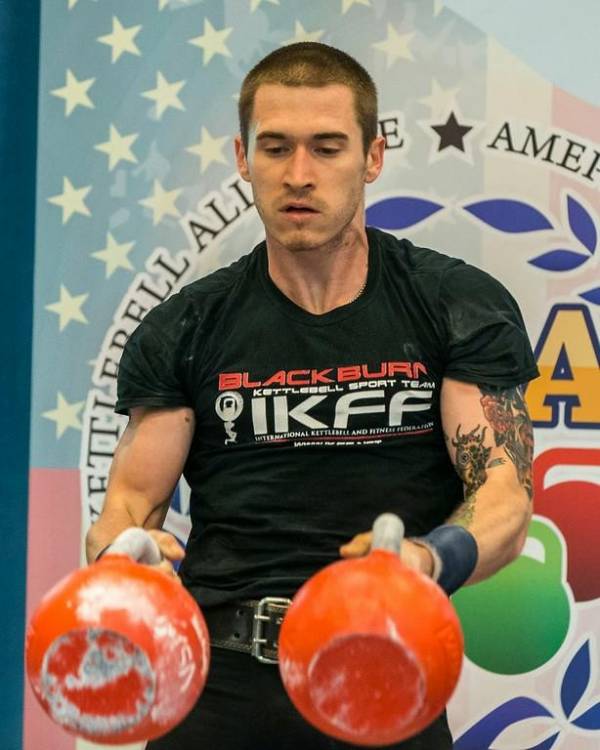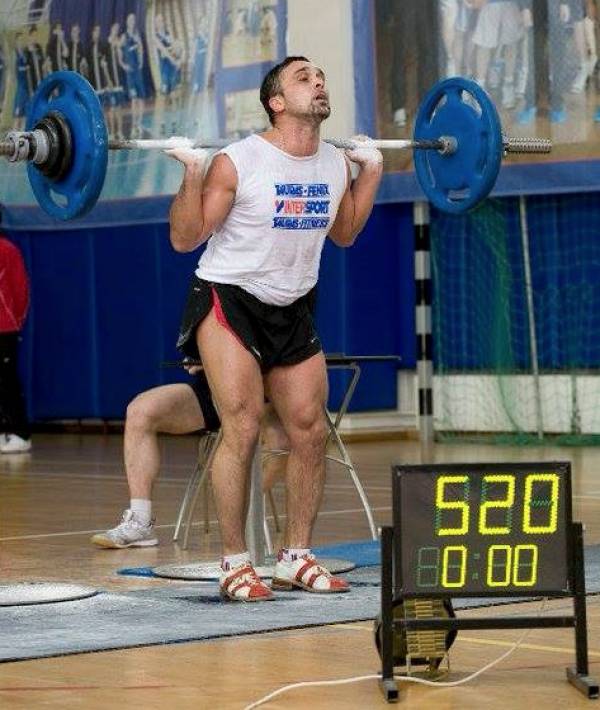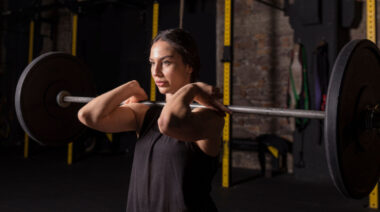Over the years, I’ve made a lot of mistakes with my kettlebell sport training. Every experienced athlete wishes they could go back in time to help their younger self avoid pitfalls and become even better, stronger, and faster today.
But until that day is possible, we can only learn from our errors and share our wisdom with others in hopes that they’ll benefit from our blunders. Here are five things I wish I knew when starting kettlebell sport.
Tip #1: Invest in 2kg Increment Kettlebells
When I first started lifting, the only competition kettlebells available were the “traditional” weights in 4kg increments – 8, 12, 16, up to 40kg – and they were available primarily through two main vendors in the United States. No, we weren’t exactly spoiled for choice, but compared to the 8kg increments experienced by my predecessors, my options seemed rather comprehensive.
Kettlebells at Texas Kettlebell Academy (Austin, TX)
Today, there are at least half a dozen vendors in the U.S. providing high-quality kettlebells in 2kg increments. These in-between bells help bridge the gap between competitive weights. These gaps feel exponentially greater as you approach the professional level (24kg for women, and 32kg for men). The greatest benefits to using 2kg increment kettlebells are that they help you maintain a higher level of technical proficiency during the transition and allow your bones and soft tissues to adapt more gradually to the heavier load.
If the budget affords it, I highly encourage purchasing some “in-betweeners.” If you’re not afraid of a little DIY, one- or even half-kilogram increment bells can be made using open-mold models.
Tip #2: Regularly Switch Between Biathlon and Long Cycle
After over two years of steady training for biathlon (a competition in two events, jerk with two kettlebells, then snatch with one kettlebell), I reached a breaking point. Not only were my numbers not growing, I was worn down physically, mentally, and emotionally. After a disappointing performance, Denis Vasilev, multiple-time world champion, world record holder, and one of the nicest guys I know, suggested I try long cycle (the single event of clean and jerk with two kettlebells) – just for a month or two. “You never know,” he said, “you might like it better than biathlon.” Yeah, okay, Denis – we’ll see!
The next week I started long cycle. And you know what? I did like it. But most importantly, it provided a much needed mental and emotional break from my previous training. And since I had never trained in long cycle before, pretty much everything I did was a personal record. I was able to have fun again and also improve some technical issues with my jerk without obsessing over my results. I also learned more about timing and using my bodyweight as leverage in the clean, which carried over to the snatch. Long cycle became an important teaching tool for improving my overall technique.

Chris Doenlen – Long Cycle at US Nationals 2014
Each discipline develops the athlete differently. Biathlon requires greater amounts of local muscular endurance due to the high overhead volume. Conversely, long cycle demands exceptional conditioning. Thus it’s important to spend time in both (though not necessarily during the same training cycle) to be well-rounded and prevent burn out.
Tip #3: Don’t Copy Anyone Else’s Technique
Understand that certain technical nuances work for a particular lifter due to his or her strengths, weaknesses, and physical attributes like height, weight, and length of torso and limbs.
After studying the great lifters, turn that attention on yourself. Be honest with your assessment and determine what’s working and what isn’t. Imitation can be a powerful learning tool, but at some point you have to find your own way. I hate to be so trite as to quote Bruce Lee, but his words really apply here – “Absorb what is useful, discard what is useless, and add what is specifically your own.”
Tip #4: Strength Will Only Get You So Far
Ever since I started lifting in high school, I’ve wanted to put more and more weight on the bar. Even when I was spandex-deep into cycling, I was still lifting heavy in the gym. It’s no surprise that I kept trying to lift heavy as often as possible when I began in kettlebell sport. But while strength is important in this sport, it’s not the most important aspect.

Sergey Rachinskiy – Kettlebell Sport Legend and Guinness World Record Holder
With endurance on one side of the fitness spectrum and strength on the other, kettlebell sport falls somewhere in the middle. You could go to either extreme and run a marathon or max out your deadlift, but the farther you stray from the specific demands of the sport, the less you’ll be rewarded for your effort. Maximum strength is important for well-rounded fitness, but it has very little carry over to kettlebell sport.
Tip #5: It’s Okay to Have an Off-Season
Unlike other sports, kettlebell lifting doesn’t really have an off-season. There are competitions year-round, so it’s easy to get so absorbed in your results that you lose sight of everything else. You might lose your balance, whether physically via overuse injuries or muscular imbalances, or mentally and emotionally by investing too much of your identity and self-worth into your results.
“Following these five suggestions will help reduce the risk of injury and burnout, and provide you with a healthy body and mind.”
Sometimes you need a break from kettlebell sport, and that’s okay – it really is. Take a week, a month, or even a few months off after a big training cycle and play other sports. Address some of those imbalances or weaknesses. Once you feel like you’ve regained your footing, you’ll come back feeling rejuvenated.
Kettlebell Sport for Longevity
Of course there are many more lessons, but these are the most fundamental. Following these five suggestions will help reduce the risk of injury and burnout, and provide you with a healthy body and mind. Kettlebell sport has a great reputation for longevity – it’s not uncommon to see athletes in their sixties and seventies on the platform. In this context, it’s important to adjust your focus beyond what’s going to make you a better lifter today, and look forward to the years to come.
More on training with kettlebells:
- Strategies for Success at Kettlebell Sport Competition
- From Circus Acts to World Titles: The History of Girevoy Sport
- Hardstyle, Girevoy, or CrossFit? How to Decide Which Kettlebell Style is Best
- New on Breaking Muscle Today
Photo 1 courtesy of Aaron Vyvial.
Photo 2 courtesy of Chris Doenlen.
Photo 3 courtesy of Sergey Rachinskiy.






